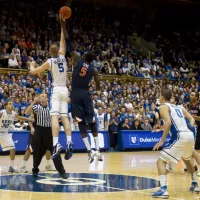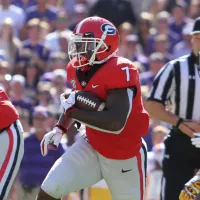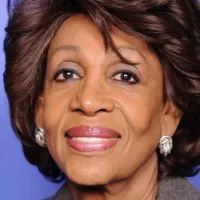The Associated Press (AP) poll ranks the top 25 NCAA teams weekly in Division I football, men's basketball, and women's basketball. Sixty-two sportswriters and broadcasters nationwide submit individual top 25 rankings. Points are assigned based on rank (25 for first, down to 1 for twenty-fifth), and these are totaled to create the national ranking. Voting members' ballots are made public.
November 1934: AP Conducts Early Poll
In November 1934, the Associated Press (AP) conducted one of its earliest polls of sports writers to determine the best college football teams in the country by popular opinion.
1935: Three-Way Tie Declared
In 1935, AP sports editor Alan J. Gould declared a three-way tie for national champion in football between Minnesota, Princeton, and Southern Methodist. Minnesota fans protested, leading to calls for a poll of sports editors.
1936: AP Poll Ranks 20 Teams
From 1936 to 1988, the AP poll ranked twenty teams in the nation.
1936: Weekly AP College Football Poll Born
In 1936, the weekly AP college football poll was established and has run continuously since then.
1936: Number One Ranked Team Statistics
Through the 2023 season, the number one ranked team has faced the number two ranked team 54 times since the inception of the AP poll in 1936. The number one team has a record of 29–21–2 (.577) against the number two team.
1947: AP Releases Unofficial Post-Bowl Poll
At the end of the 1947 season, the AP released an unofficial post-bowl poll that differed from the regular season final poll.
1948: AP Compiles Basketball Rankings
In 1948, the AP began compiling a ranking of the top 20 college men's basketball teams during the 1948–1949 season.
1949: AP Compiles Basketball Rankings
In 1948, the AP began compiling a ranking of the top 20 college men's basketball teams during the 1948–1949 season.
1950: AP Begins Preseason Poll
In 1950, the AP began conducting a preseason poll for college football.
1950: Coaches Poll Published
In 1950, the Coaches Poll was published by the United Press.
1950: AP Issues Basketball Poll Continuously
The AP has issued a basketball poll continuously since the 1950–1951 season.
1951: AP Issues Basketball Poll Continuously
The AP has issued a basketball poll continuously since the 1950–1951 season.
1954: Split National Title
In 1954, one of eleven different occasions took place where two major polls disagreed on the No. 1 team.
1957: Coaches Poll Published
In 1957, the Coaches Poll was published by the United Press.
1958: Coaches Poll Published
In 1958, the Coaches Poll was published by the United Press International.
1961: AP Poll Only Recognizes Ten Teams
From 1961 to 1967, the AP poll only recognized the top ten teams.
1964: Alabama Named National Champion, Loses Orange Bowl
In 1964, Alabama was named the national champion in the final AP Poll following the completion of the regular season, but lost in the Orange Bowl to Texas. Arkansas defeated Nebraska in the Cotton Bowl and was the only undefeated, untied team.
1965: Split National Title
In 1965, one of eleven different occasions took place where two major polls disagreed on the No. 1 team.
1965: Michigan State Loses Rose Bowl
In 1965, top-ranked Michigan State lost to UCLA in the Rose Bowl, number two Arkansas lost to LSU in the Cotton Bowl, and fourth-ranked Alabama defeated third-ranked Nebraska in the Orange Bowl, vaulting the Crimson Tide to the top of the AP's final poll.
1967: AP Poll Only Recognizes Ten Teams
From 1961 to 1967, the AP poll only recognized the top ten teams.
1968: Post-Bowl Game Poll Becomes Permanent
Beginning in 1968, the post bowl game poll became permanent and the AP championship reflected the bowl game results.
1968: AP Releases Final Poll After Bowl Games
Until the 1968 college football season, the final AP poll of the season was released following the end of the regular season, with the lone exception of the 1965 season.
1970: Split National Title
In 1970, one of eleven different occasions took place where two major polls disagreed on the No. 1 team.
1973: Split National Title
In 1973, one of eleven different occasions took place where two major polls disagreed on the No. 1 team.
1974: Split National Title
In 1974, one of eleven different occasions took place where two major polls disagreed on the No. 1 team.
1974: UPI Follows Suit
In 1974, the UPI (United Press International) followed suit with the coaches' poll.
1976: Women's Basketball Poll Begins
In 1976, the women's basketball poll began during the 1976–1977 season.
1977: Women's Basketball Poll Begins
In 1976, the women's basketball poll began during the 1976–1977 season.
1978: Split National Title
In 1978, one of eleven different occasions took place where two major polls disagreed on the No. 1 team.
1988: AP Poll Ranks 20 Teams
From 1936 to 1988, the AP poll ranked twenty teams in the nation.
1989: Basketball Poll Expands to 25 Teams
Beginning with the 1989-1990 season, the AP basketball poll expanded to 25 teams.
1989: Women's Basketball Poll Top 20
Through 1989, the women's basketball poll continued to be a top 20 poll.
1990: Basketball Poll Expands to 25 Teams
Beginning with the 1989-1990 season, the AP basketball poll expanded to 25 teams.
1990: Coaches Poll Published
In 1990, the Coaches Poll was published by the United Press International.
1990: Women's Basketball Poll Increased to 25
In 1990, the women's basketball poll number was increased to 25 and subsequent years.
1994: AP Takes Over Women's Basketball Poll
In 1994, the AP took over administration of the women's basketball poll from Greenberg and switched to a panel of writers. The AP voting was delayed for one day due to a special game between Tennessee and Connecticut.
1997: Bowl Championship Series Developed
In 1997, the Bowl Championship Series (BCS) was developed to unify poll results by picking two teams for a national championship game. The AP Poll factored in the determination of the BCS rankings.
1997: Coaches Poll Published
In 1997, the Coaches Poll was published by ESPN.
2003: Split National Title
In 2003, one of eleven different occasions took place where two major polls disagreed on the No. 1 team.
2003: BCS System Breaks Down
In the 2003 season, the BCS system broke down when the final BCS standings ranked USC at No. 3, while the human polls in the system ranked USC at No. 1. This led to a split national title and embarrassment for the BCS.
2004: Controversy Erupts
In 2004, Auburn and Utah finished the regular season 12–0 but were left out of the BCS title game. Texas coach Mack Brown lobbied for his team to be moved higher in the ranking. Ultimately, the AP Poll voters became targets for fan ire.
2004: AP Asks Poll Not Be Used in BCS Rankings
In 2004, the AP asked that its poll no longer be used in the BCS rankings due to controversy, leading to the creation of the Harris Interactive College Football Poll.
2005: Coaches Poll Published
In 2005, the Coaches Poll was published by ESPN.
2005: Last Season AP Poll Used in BCS Rankings
The 2004–2005 season was the last season that the AP Poll was used in the BCS rankings.
2012: AP Begins Pro Football Ranking
Beginning in 2012, the AP began issuing a weekly pro football ranking, the AP Pro32 rankings.
2023: Number One Ranked Team Statistics
Through the 2023 season, the number one ranked team has faced the number two ranked team 54 times since the inception of the AP poll in 1936. The number one team has a record of 29–21–2 (.577) against the number two team.
January 10, 2024: AP Publishes Article Detailing Basketball Poll
On January 10, 2024, the Associated Press published an article detailing their 75th anniversary of the AP poll for men's college basketball and highlighted Kentucky, North Carolina, Duke, Kansas and UCLA as the top 5 programs.
Mentioned in this timeline

Basketball is a team sport played on a rectangular court...

College football is a popular amateur sport in the United...

College basketball in the U S is governed by bodies...
CNN Cable News Network is a multinational news organization founded...
Connecticut is a state in the New England region of...

Football is a family of team sports primarily involving kicking...
Trending

42 minutes ago NFL Week 13 Predictions: Caleb Williams Impact and Key Matchup Insights Revealed

42 minutes ago D'Andre Swift's Fantasy Outlook: Bounce-Back Potential Against Steelers in Week 12
42 minutes ago Luther Burden III, Cole Kmet, and A.J. Brown NFL tickets available for purchase.
2 hours ago Germany and Spain to battle in the 2025 Women's Nations League Final.

2 hours ago SpaceX Transporter-15 mission: Falcon 9 launch attempt, carrying 140 spacecraft to orbit.

2 hours ago Rome Odunze potential, Caleb Williams NFL Impact, and Fantasy Football Bench Choices
Popular
Aftyn Alyssa Behn is an American politician currently serving as...

William Franklin Graham III commonly known as Franklin Graham is...

Candace Owens is an American conservative political commentator and author...

XXXTentacion born Jahseh Dwayne Ricardo Onfroy was a controversial yet...

Marjorie Taylor Greene known as MTG is a U S...

Maxine Waters is an American politician who has served as...